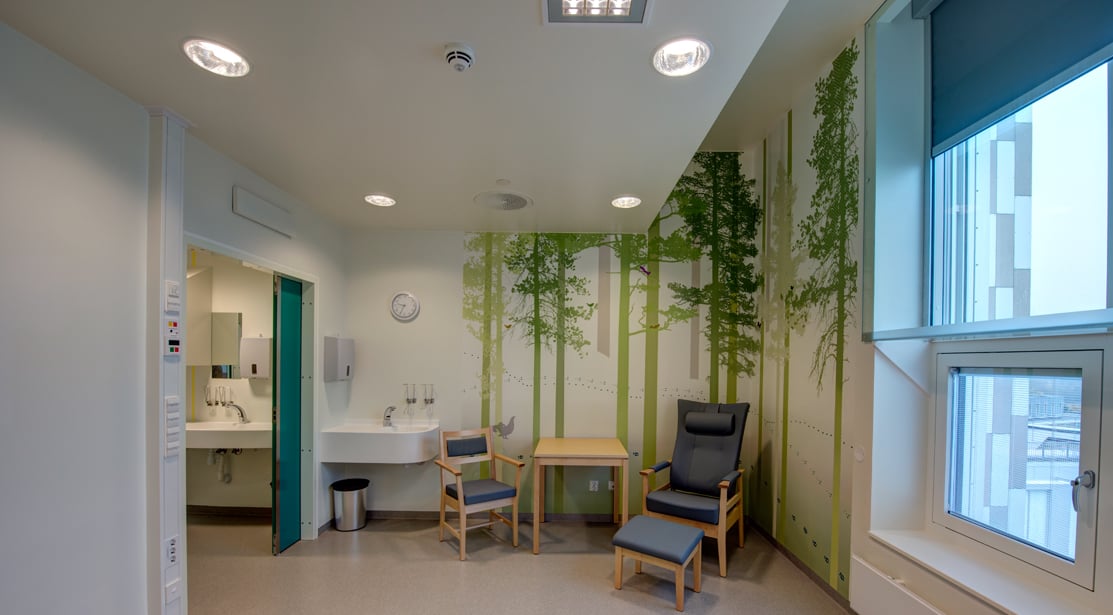Personal wall-mounted luminaires can fulfil all of these requirements by emitting pleasant, glare-free lighting. In terms of lighting design for hospitals, easy-to-clean lighting products that do not accumulate dust and dirt are particularly preferable in medical environments where cleanliness is key.
Patients in single-bed rooms at medical wards can access direct light either by using arm-based reading lights or bedhead lights. The arm-based reading lights are flexible luminaires can be used to position light as needed thanks to their ergonomically designed handles. They are also very easy to clean and can be supplied with dimmable control gear. The staff or the patient can then adjust the light level to suit any individual situation.
Psychiatric wards
Light can also have a therapeutic effect. Psychiatric hospital departments can draw particular benefits from Human-Centric Lighting. Research shows that exposure to orange light and blocking blue light can cause manic episodes to weaken in bi-polar patients.

The lighting project Glamox has completed at St Olav’s Hospital in Trondheim, Østmarka, was planned based on this type of research, with a strong emphasis on the use of light for treatment purposes. This project called for HCL lighting that mimics natural sunlight during the day, energising the patients. It then switches to orange light from 6 p.m. onwards, causing their bodies to release more melatonin. This has a calming effect and makes the patients’ hyperactive phases milder and allows them to improve their sleep rhythm.
Most patient room lighting should be recessed and sturdy enough to prevent damage. This type of lighting is called anti-ligature lighting and is meant to ward off patients from hurting themselves – either by hanging up materials off lamps with protruding elements, or by damaging pieces of lighting and other equipment to create sharp objects that can be used for self-harm. An adequately high IK mechanical impact resistance class is important, in addition to robust products with firm hanging points, curved edges and tamper-proof entry fixings.